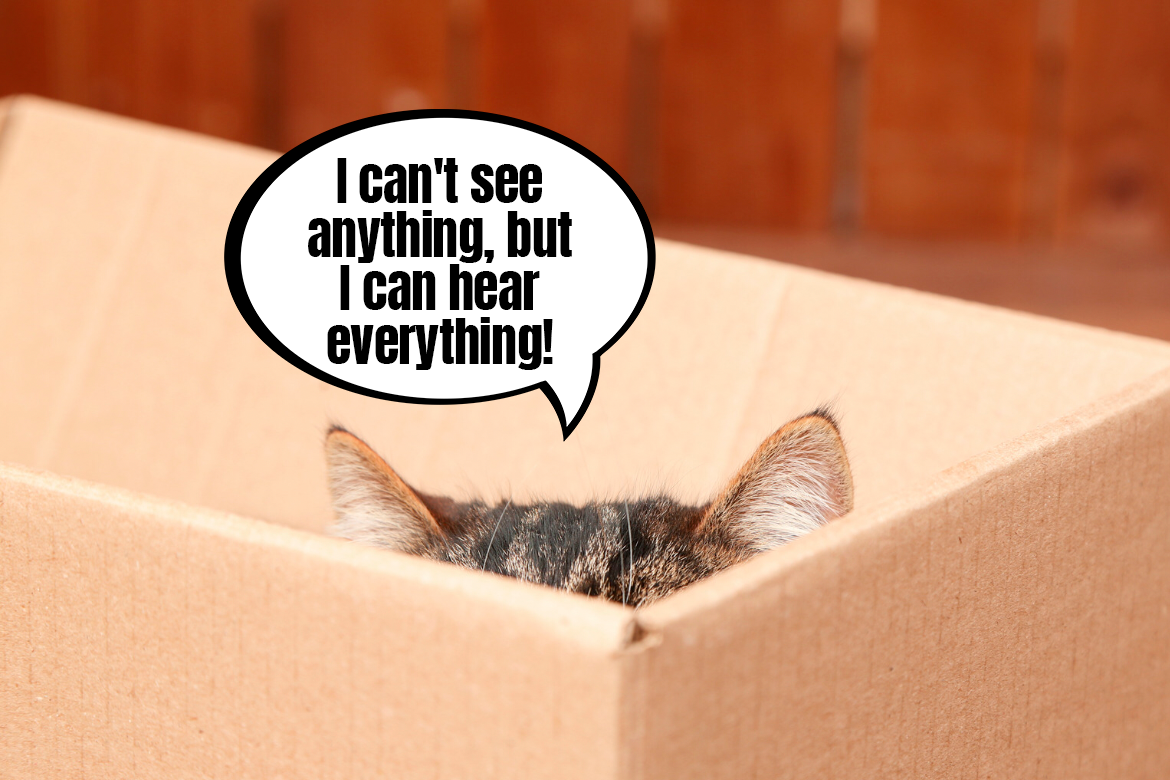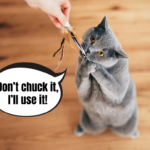Cats’ requirements regarding keeping up their hygiene and hooman’s help are minimal. After all cats, born as purrfectionists, are fully capable of taking care of themselves very well. But there are things where it’s not worth being stubborn – when it comes to cleaning their ears or teeth, the help of a cat Guardian can be invaluable. But do you know, fabCat, how to correctly and safely clean out your cat’s ears and when you should pay special attention to them?
When to check your cat’s ears?
Hearing is one of the cat’s most basic senses that allows them to efficiently patrol their surroundings. It’s double as sensitive as dogs’ hearing and even five times better than human hearing. And this is why it’s worth keeping it as operational and in good condition as possible – clean ears can hear every sound a fresh packet of snacks or a can of tuna makes. Cats clean their ears using their paws, during their regular, everyday grooming – they rub the ears inner and outer surface and if anything’s itchy, they scratch it or shake their head to make the itch go away.
Whatever the cat does on a day to day basis is usually enough – if there’s nothing bad happening, there are no wounds or irritated spots and the ear wax production is normal, hooman’s help should be generally limited to regularly checking if the ears look clean. We check that ourselves with our team cats even once a day, whenever we cuddle with them. Because both our boys – Teddy and Kitku Yoda, and the team cat Tosia, are all Scottish fold cats, checking their ears is even more important with their ears folding over.
Do cats’ ears need regular cleaning?
As a general rule – no. A fully capable cat who’s in good shape can handle grooming their entire body by themselves, ears included, and doesn’t need the help of their hooman with a cotton pad. As a preventative measure, gently wiping down the visible parts of the ear once a month with a cotton pad lightly soaked with a dedicated ear cleaning product for cats is enough. However, if there are visible signs of the ear being dirty, it’s worth wiping it down even once a week to minimise the risk of infection. It’s also good to check in with the vet, either during your next scheduled visit or, if your cat is showing signs of discomfort (e.g. intensively scratching the ear), as soon as possible.
And what should you be looking out for when checking the cat’s ears? First and foremost, look for dark secretions and dirt, mostly around the base of the ear and in any folds of the ear, but also pay attention to any redness, bad smell, scratches or bald patches – they can all be a sign of possible infection.
ABC’s of ear cleaning
Cats can be divided into two groups: the fans and the avid adversaries of having their ears touched. The first group, with some work and getting used to being groomed, should have no issues with having their ears cleaned or checked. The second group, on the other hand, could show some resistance when it comes to you trying to clean their ears. With them, it’s even more important to check out the topic of cat medical training, either as a webinar or a face-to-face consultation with a behaviourist or a veterinarian. And we want to remind you of one golden rule of the cat world, fabCats – though it’s definitely easier to teach a cat to tolerate grooming when they’re still kittens, older cats can be taught to get used to having their ears and teeth cleaned or getting combed without starting the Fluff War III. All they need is some proper training and a positive attitude from their cat Carer.
Where to start? From preparation, of course. Choose a good ear cleaning product dedicated for cats and some soft cotton pads which won’t irritate the cat’s delicate skin. If you’re getting ready just for an ear check (and that’s what we recommend starting from to ease the cat into the whole process), no product is necessary. Take advantage of the time your cat is sleeping in your lap or by your side, gently grab their ear, take a look at the visible parts of the ear, pet your cat on the head and remember to reward them for good behaviour at the end. If it’s all ok and your cat tolerates being touched, the next step (next time you do the ear check) would be to gently massage the ear and, if your cat allows it, slowly introduce touching the ear with a cotton pad.
The standard, preventative ear cleaning is quite simple – with a cotton pad lightly soaked with an ear cleaning product, wipe the inner, visible part of the ear gently, removing any dirt and buildup you see. A procedure like this shouldn’t take longer than a few seconds. Remember not to rub the cotton pad too hard – it could irritate the ear or even rub off their fur, which is there to protect the ear from dirt and dust. Alternatively, instead of a special ear cleaner, you could use a saline solution available in the pharmacy. Remember, though, not to use any wet wipes, baby wipes or products that are designed for people on the cat’s ears or around their eyes.
If there’s an infection
Now the case is a little more serious. Any infections should be checked out and diagnosed by a veterinarian and they will prescribe your cat with a product designed to clear it all up. Those liquids (usually oils) are often designed to be administered directly into the ear. Your cat won’t like it, most probably, and will quickly evacuate themself from your lap after one try, shaking their head vigorously to get rid of the fluid. Don’t give up, fabCat – take it all with a huge dose of patience and, if necessary, repeat the procedure twice a day: right ear in the morning, left ear in the evening, each of them compensated to the cat with a tasty snack or their favourite meal. The treatment isn’t usually that long, but the fight for clean and healthy ears is definitely worth it.
Though cleaning a cat’s ears is not an everyday thing, we definitely recommend you, fabCats, to learn doing it properly. Training with a cat when they’re healthy and it all comes down to a nice ear massage is definitely better than trying to administer a medicine to a cat who has never experienced having their ears cleaned before. How does it look with your cats? Do they let you take a look into their ears and handle gentle cleaning with no problems? We’re waiting for your fabCat comments.




